Gina Harris's Blog, page 136
December 1, 2016
Band Review: Matt Steady
Matt Steady is an independent musician from Leicester whose music draws from folk and blues, with strong Celtic influences.
"Jack O'kent" sounds very Irish, but I am most interested in the more blues-infused songs. It sounds like the blues, and not country at all, and yet he still reminds me of Johnny Cash. There are at times a depth and richness to the Steady's performance that brings Cash to mind, without a strong musical resemblance.
(Steady does versions of "Ring of Fire" and "Hurt", and they don't sound the same there.)
So that vocal quality is what struck me most, and may be the best reason to listen further.
http://mattsteady.com/
https://www.facebook.com/MattSteadyMusic
https://www.youtube.com/user/matthewsteady
https://soundcloud.com/mattsteady
https://twitter.com/MattStoicSteady
Published on December 01, 2016 12:56
November 30, 2016
Gender Stricture
I'll be starting with a completely unscientific and possibly offensive observation.
I had heard once that the percentage of the population that identifies as queer (and at the time it was "gay", but I think "queer" works better here) was ten percent. The last data I saw estimated it was closer to four percent, but I had ten in mind for a long time. However, among professional entertainers - especially dancers and figure skaters - that percentage seemed much higher, with maybe as many as fifty percent among the men. However yet again, that did not seem to be the case with the Russians, where there were many more straight men performing.
Other things I have read don't really indicate that Russian society is more accepting of homosexuality, so I didn't think that was the reason. It does seem possible that the Russian concept of masculinity is better at including artistic expression. Honestly, that doesn't require being that open-minded, because there is a lot of strength and athleticism involved in those pursuits.
My point in even mentioning this is that it seems likely that the demands of masculinity - at least in US culture - can discourage many boys from pursuing various artistic paths. There are probably many who could have been really great, and it would have been satisfying for them and edifying for the people who got to see them perform, but the possibilities get discarded, because it's for sissies.
This is where I write about Suzanne Pharr's Homophobia: A Weapon of Sexism.
A couple of things stood out early. Part of her early work was with domestic violence. Many of the battered women had been called "lesbians" by their batterers. Often they were not lesbians, but the term was used to justify the beatings.
Pharr started giving workshops on homophobia for both straight and lesbian women, and it was energizing for all of them. She asked them to visualize what the world would be like without homophobia, and it was huge for them. Part of that is that when you are surrounded by domestic crisis, so much time is spent in responding to damage that you don't get to spend a lot of time on vision. And a big part of it was just imagining taking away those restraints.
By imagining a world without homophobia, they were able to envision a world where children won't be labeled, or pushed into one direction or another. That would free children up to realize their potential. They imagined a world where people could be more affectionate - not just with partners, but with all kinds of relationships because you don't have to worry about it being misconstrued and getting you harmfully labeled. Women will be able to work any job without being called masculine. There will be less violence because men will not need to prove their manhood. People will be able to wear whatever they want.
That's one thing that people often seem to miss about social justice work. Feminism makes things better for men. Anti-racism work succeeding makes a better world for white people. Eliminating homophobia makes a better world for straight people. As important as it is to realize that marginalized people suffer more, the bigotry isn't good for anyone.
Some of my favorite male dancers have been straight, so going back to the opening, I have to admire them for persisting. I am sure there was name-calling and mockery, but they had gifts, and they developed them and shared them. That is great, and art is important.
Think about it beyond that. What do we lose by putting up barriers? Which mind that could have figured out a new technique for fighting cancer, or harnessing solar for cars, or cleaning up the oceans, was discouraged and discarded? If we weren't so consistently comfortable with marginalizing other people, pollution and disease wouldn't be allowed to take the toll they have even without new technologies.
If we want a better world, it will start with valuing each other. Each and every other one.
Published on November 30, 2016 14:22
November 29, 2016
Utopias
One book that almost ended up on the Long Reading List was Sir Thomas More's Utopia. So many teens are looking for the place where they will fit in, and so often that perfect place is no place, that it felt like it could be relevant. I decided that More's ideal would probably be different enough from a modern teen's ideal that it wouldn't be a huge help.
Having now read Utopia, I can see some correlations, but it fits in better with the context of my current reading. (I really believe I have a good book sense of what to read when.)
The first thing I noticed was the enforced lack of individuality. Everyone is happy in Utopia because their needs are met, but they only play one of two games, they eat all of their meals together, they all dress alike, and they regularly move homes so that nothing is really theirs. Knowing that More really loved the monastic lifestyle and only refrained from choosing it because of his desire for a family makes it all understandable, but still not desirable for someone who values choice. I had to wonder whether that sort of conformity was even necessary for a tranquil society.
That became more interesting in reading Why We Lost the ERA, when this came up:
"Rosabeth Moss Kanter's study of nineteenth-century communes found that when communes institutionalized exclusivity they were more likely to survive. The most successful communes discouraged relationships outside the group through geographic isolation, economic self-sufficiency, a special language and style of dress, and rules that controlled the members' and outsiders' movements across the boundaries of the community. Three-quarters of Kanter's successful communes did not recognize the traditional American patriotic holidays. Half read no outside newspapers. More than a quarter specifically characterized the outside world as wicked."
I had some thoughts about limiting news sources anyway, and that was the part that stuck out when I first read it. Reading it again, the same manner of dress becomes not only a matter of conformity within the community but a marker of opposition to the world outside the community. No wonder the outsiders start to look wicked.
Then I moved into my Native American Heritage Month reading, and also felt compelled to start The Invention of the White Race, which has been fitting in well. Here we keep finding colonial societies needed to eradicate more communal societies, not just in the Americas but also in the British Isles. Here the more communal societies are welcoming to outsiders, and build strength by marriage, adoption, and foster relationships. This time it is the capitalistic society feeling the need to eradicate perceived threats. There may be specific roles that are necessary, and I have been surprised by some of the strong Yurok class distinctions, but still, there are things that seem to work better without turning the entire society into a cloister.
I mention that because it seems like whether your revolution was socialist or fascist it often ends up with the same results. That includes putting a lot of people on the trash pile. There does seem to be a deep-rooted belief that rooting out differences is necessary, but I don't believe it.
Someone who is actively hurting people, or destroying crops, or burning things down - there may be necessary actions there. Wanting to wear black instead of grey, or purple stripes that clash with green checks - that is not a threat. Listening to punk rock instead of classical is not a threat. Collecting coins instead of playing video games is not a threat. Not unless you are really insecure, and then it's not about them.
I admit I don't fully understand the need to have other people be like you and do like you. I get that it's awesome to find people who like the same things, but part of what makes that awesome is because not everyone does. Then finding your matches is a treat.
I do have some thoughts about cultural expectations for tomorrow, but for now I suspect the most perfect place for teenagers is that place where they can be accepted.
Published on November 29, 2016 15:59
November 28, 2016
Becoming a Killjoy
Since the election - in addition to the very incendiary post - I have been posting a lot of articles that are pretty negative. On one level it is an angry response; we have done a terrible thing and we are going to face it! At the same time, I know people who find it all stressful and who aren't really to blame.
I don't feel good about that, but it still feels necessary to face this situation with clarity. That requires information, which for this situation is dire. So it occurred to me one day that I have really become a killjoy, but then I remembered that I had examples for that.
I have written a lot about The True Lives of the Fabulous Killjoys, and the music inextricably entwined with the comic, and their part in my creative reawakening. The "Ugliness" post may have been the most important. It's not even about something that happened in the comic, just in the arc of its creation.
http://sporkful.blogspot.com/2015/08/leaving-room-for-ugliness.html
Even if there is no Mike Milligram or blank cassette tape in the comic, the underlying issues are still there. And it all still relates.
Yes, we need to be able to be dirty. We need to be able to disrupt. We need to be able to face things as they are, especially when it's hard. We need art.
If I must be a Killjoy then I can only try and be fabulous.
Maybe I won't be emulating the characters, because you have people who are just ready to fight without it being for anything, and maybe one who is so anxious not to fight that he lets worse things happen, but somehow it feels like it fits.
I'm not even sure what being fabulous means for me, but maybe it works that this year is the first time I cosplayed, and this is the year that I accidentally dyed my hair coppery red when I was only going for kind of chestnut.
This has been the year of no good news. How's your job? I got laid off. How's your Mom? Her memory keeps degrading. How are you? So stressed I broke out in hives that seem to have no intention of leaving.
And now "How's your country?"
So be it. This is also the year of facing every weakness and learning what it's really all about. I'll face it and I'll have a soundtrack.
Art is the weapon.
Published on November 28, 2016 15:17
November 25, 2016
Band Review: Litefoot
I remember first being interested in Litefoot's music after seeing him in The Indian in the Cupboard in 1995. I could not find a lot then, but seeing him again in Wacipi Powwow (viewed for my 2014 Native American Heritage Month) reminded me of him.
Rap is still not my favorite genre, and I found that the things I like least in general came through here. I kind of hate "My Chick", even though I have to admit that it's catchy. The sections that are more bragging in nature irritate me. Getting past that, then I find things that I can appreciate.
There is a consciousness to the form of his albums, often starting with a spoken word section that sets the tone ties the content together. This is true on The Messenger, but most touching on Native American Me.
As I seem to respond best when there is that extra consciousness, it probably makes sense that my favorite was Redvolution. It felt most powerful both in terms of the message and the music.
From the movie I was drawn to the chanting, and would gladly listen to that again, but the rap has its strengths as well.
http://litefoot.com/
https://www.facebook.com/litefoot
https://www.youtube.com/litefoot
https://twitter.com/litefoot
Published on November 25, 2016 12:53
November 24, 2016
Band Review: Ulali
When I reviewed Pura Fé, I saw that she had originally started in an a capella group, and I wanted to check that out. There wasn't a lot to listen to, and they are no longer active, but there is always some guilt that the Thursday review the week of Thanksgiving might not get read much, so this seemed like a good match.
The group has gone through many incarnations and name changes, but calling it Ulali itself brings to mind the trio of Pura Fé, Soni Moreno, and Jennifer Kreisberg. Under the name Pura Fé it can also include three male singers, but that can also mean just Pura Fé as a solo artist. Without Soni, it can be Twolali, or with Pura Fé and Jennifer plus two other singers it can be the Ulali Project.
I was listening to just Ulali, with the three. Although that covers a limited time frame, with less specific work, they were still featured on movie soundtracks and recorded with Indigo Girls and Robbie Robertson. It is reasonable to appreciate what they did.
It does not sound specifically like listening to First Nations music. At times there seems to be more of an African and South American - maybe even Caribbean - influence. That is especially noticeable on Ma' Africa, recorded with Mahotella Queens. Fans of world music should check them out.
And then, if you like them, checking out their other forms can keep you busy for a while.
http://www.ulali.com/
http://purafe.com/ulali-project
Published on November 24, 2016 13:18
November 23, 2016
Accelerating
I need to learn how to drive.
It was always part of the plan, but it was always the most difficult. It is difficult due to needing someone to practice with, and it is difficult due to all of the emotions that have been tied up with driving since I hit that car and my father got mad at me and stopped speaking to me for two and a half years, starting the day before my seventeenth birthday.
Because of the baggage, I always had in mind that driving would be the last thing to happen. I would fix everything else, and it would free up so much mental energy and strength and time that I would be totally ready for it.
Then Mom's car battery died.
We have been having her drive less anyway. She is still pretty safe, but she enjoys it less, and her reflexes are slowing down. We know that it will be something she needs to give up eventually, but if there are still a few places she can get to (mainly church), and doing so keeps one part of her mind open, that felt worthwhile.
It turns out that doesn't work the car that much. This is the sort of thing that can cause the exhaust system to not get dried out so that the battery corrodes and it dies. I think I've got that right. Anyway, the car was totally dead. No sputtering. No radio or lights coming on. It was dead.
This could be a reason to let the car go completely. We thought about it, but that didn't feel quite right either. Keeping the car functional (after a long charge to get it functional again) by driving for at least an hour every week puts a lot of pressure on Mom.
I think it needs to be me.
And then that opens a lot of things up. I can take her places where she would not be confident driving, which can provide more stimulation and enrichment for her. It means we can be more useful to the household in terms of accomplishing certain things while Julie and Maria are at work. It removes some concerns about our distance from her neurologist and the temple. For those reasons, it is the best solution.
It is also scary. I will be practicing in the dark rainy part of the year. I can do some practicing with her, but I should go places that she would not want to take me. If I am going to do this, I want to be good at it. Who will take me onto the freeway and into downtown and over bridges? Am I crowdsourcing that? Do I have reward tiers for hours of driving practice and where?
It raises financial questions too, like paying for insurance, but if I am only driving her around for now, I can stay on permit for a while. It looks like they are good for two years now, so that's helpful.
Still scary.
And scary in the sense that it is just one more thing being thrown at me, fast, and where I don't know if I'm ready for it. That was true before we elected a racist demagogue, but even more now there is this sense of needing to hurry up, to learn everything and heal everything fast.
It still ends up being one step at a time. Next week I need to go take my test. Then some time on a weekday in the church parking lot with Mom. Then... I guess I work out my crowdsourcing plan.
Published on November 23, 2016 14:46
November 22, 2016
To Do: Writing a fat heroine
The dressing up goal had so many different possibilities with it that it ended up becoming a four-part goal that is still not quite done. ("Done" is kind of a loaded term for me anyway.)
Writing a fat heroine has been like that too, though in some ways it felt more like I was working my way up to it.
I gave Claudia and Morgan some extra padding, where confidence was an issue but not health. That didn't really feel like enough. If the heroine wasn't grappling with all of the issues of being fat, then I am probably not really facing my full issues. I still totally see the point in getting more body types represented in fiction, so it had value in that way, but it did not address my specific issue.
I do sometimes think about turning the fan fiction into a dystopian novel series. In light of that, I have thought about putting someone who looked like me into there, but all I could imagine was some kindly fat older person who sacrifices herself for someone who could actually run.
At the time that seemed reasonable, because the post-apocalyptic dystopian wasteland is a harsh environment where fitness seems advantageous. Since thinking that, I have had to remember that I was conflating weight and health - a common mistake. A different discussion since then reminded me that I have larger friends who are good runners, and I know thinner people who are pretty weak.
I am not fast, but I have good endurance - better than a lot people's. Getting regular meds would probably be difficult in said wasteland - which could hamper survival - but maybe if your access to food is really irregular, your access to insulin matters less.
Viewed in that light, I am probably not ready to create a fictional fat heroine until I have spent more time on exactly what my fat means to me. That is not merely how it affects my self-image (which I have thought about a lot) but also fully realizing what my body can do. I don't give it enough credit, and so that's not really truth. Honesty is crucial to writing, and it means seeing the good and the bad. I haven't fully done that. Fortunately, there are many steps and goals on this journey that do focus on my body and health and things that will be overall helpful to my healing.
There have been two other surprising developments. One is the other drawing project I am working on. I mentioned yesterday that I was drawing faces for "Powers". What I did not mention was that meant specifically drawing faces of Black women. "Powers" is set at a historically Black women's college. Not every student and faculty member is Black, but all the main characters are, and I had this idea that for the mini-bible when it goes over characters I could draw the student body cards and faculty badges to make it visually interesting.
I had given up the idea because I didn't think I could do a good job, but then it is taking me a while to complete anyway, and I want to draw, so I am at least trying. That means looking at women of different ages and physical types: one color, but with a lot of variety.
I am learning a lot from it. Drawing from my head kind of gives everyone the same basic features, only really changing the hair. There is a lot of variety in face shapes and noses and eyebrows. I will probably never be a great artist, but doing this now makes me more aware of how many different ways people can be, and that does not hurt for a writer.
(And I can totally see now how much the options would open up by adding color, and also know that I do not have the ability at this time to make that work, so am sticking with pencils and gray scale.)
The other part of that was finding that I could not envision a happy ending for me at my size. Having encountered great difficulty in changing my size made that particularly painful. My life script had always been built on thinking that part would change and then everything else would be fine. I could reexamine the idea of a happy ending, and the idea of bodily shrinking fixing everything else (both seriously flawed concepts) but there in my core wound there was still the problem of me (as I am) not getting happiness.
So the most important thing may have been writing out stories of things happening in my life, to me, where I was getting what I wanted. They focused on love, which may be worth examining. One dealt with the financial issues only by mentioning that things had come through at the last possible moment. I really regret that now because I am afraid it will turn out to be predictive, and exactly when is that last possible moment and how scary does it get before then? But at the time I didn't even think about it because I was so focused on love.
Still, I was able to visualize someone I loved loving me back, and in the stories it seemed plausible.
That is worth something.
http://sporkful.blogspot.com/2015/10/this-next-section-to-do.html
Published on November 22, 2016 15:32
November 21, 2016
Inktober
The selfie-taking continues. There were some shots in October where I looked really happy, and a friend asked if it was working.
My first thought was "no", because I do not like my looks any better. Sometimes I feel like I am getting uglier every day. The purpose of the challenge is more to feel comfortable with your appearance than to make you rate the appearance as better, so if I care less about being ugly, that might count as working, but I still suspect that "ugly" should not be coming to mind.
We'll probably have a few other chances to ponder that before I complete the year of selfies on March 1st. For now, I think the real reason those photos looked happier was Inktober. I'm not even saying I did it right, but it was good for me.
"Inktober" encourages you to do one drawing in ink every day in October. For comic book artists who do so much on computer now, it is a reminder to return to ink and paper and whatever nitty-gritty, tactile differences that makes. I don't fall under that.
I had already been thinking I wanted to set some goal. I had been thinking maybe drawing a different superhero each day or something, and then just as September was almost over I saw some references to Inktober, looked it up, and found this:
http://mrjakeparker.com/inktober
None of the artists I follow used this page. I don't know that anyone else did, but it gave me a guideline, and a way to focus. Those two happy selfies were two days in a row when I felt pretty good about my drawings.
I am not good. I may be worse in ink because there is no erasing, but there is smudging, and not on purpose. It still felt good.
And it was hard! "Worried" and "scared" should not have been so close together. And it functioned as word association, because there were things I could only picture one way. "Relax" is a stupid hair joke, and I don't like that drawing, but I could not come up with any other simulation of "relax" that felt true for me then.
It was still good, and it got me sketching daily. Sometimes the images felt right, and I did them! This month I am back to a pencil, and I am drawing faces, which I hope will eventually make the mini-bible for "Powers" more interesting.
I remember a while back thinking that I needed to draw more, because there is a special energy that comes with it. I didn't get to it then. Oh, here it is!
Imagine if I start getting regular about learning bass.
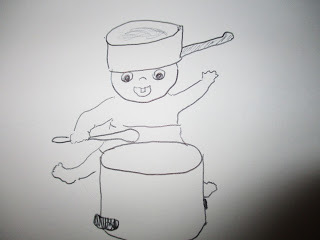 Noisy
Noisy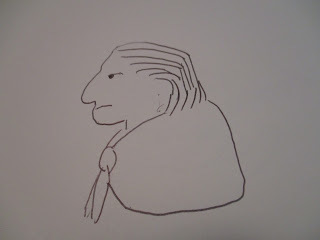 Sad
Sad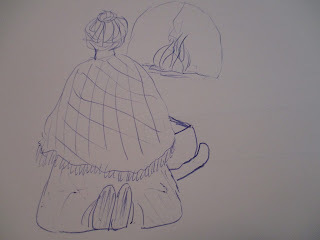 Rock
Rock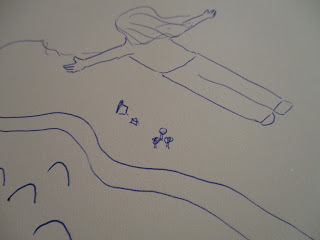 Flight
Flight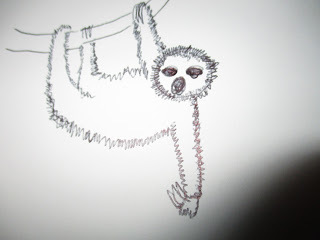 Slow
Slow 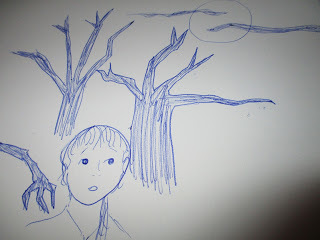 Creepy
Creepy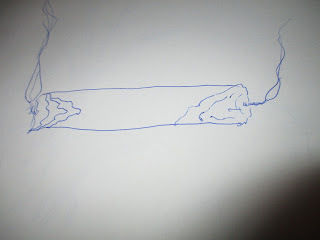 Burn
Burn
Published on November 21, 2016 12:53
November 18, 2016
Band Review: Martha Redbone
Martha Redbone is a blues and soul singer who has been featured on the Women of the Four Winds tour.
I detect jazz influences as well, in the ways that those musical forms influence each other. At times she reminds me a little of Anita Baker in her vocalizations, that shouldn't be taken as a way of putting her in a box. Too much range is covered.
Redbone lays down a bad funk on "Skin" and grooves on "Atlas". One can easily imagine her bringing a house down, but still many of the tracks are quieter and cooler, like "Talk About It" of "Just Because".
Her main page is temporarily under construction, but it appears she was recently playing in Hawaii, and next month will be hosting Martha Redbone's Indigenous Funk Party in New York.
That sounds like something she will do well.
http://martharedbone.com/
https://www.facebook.com/pages/Martha-Redbone/474870425872870?ref=ts
https://www.youtube.com/user/MarthaRedbone
https://twitter.com/martharedbone
Published on November 18, 2016 12:53



